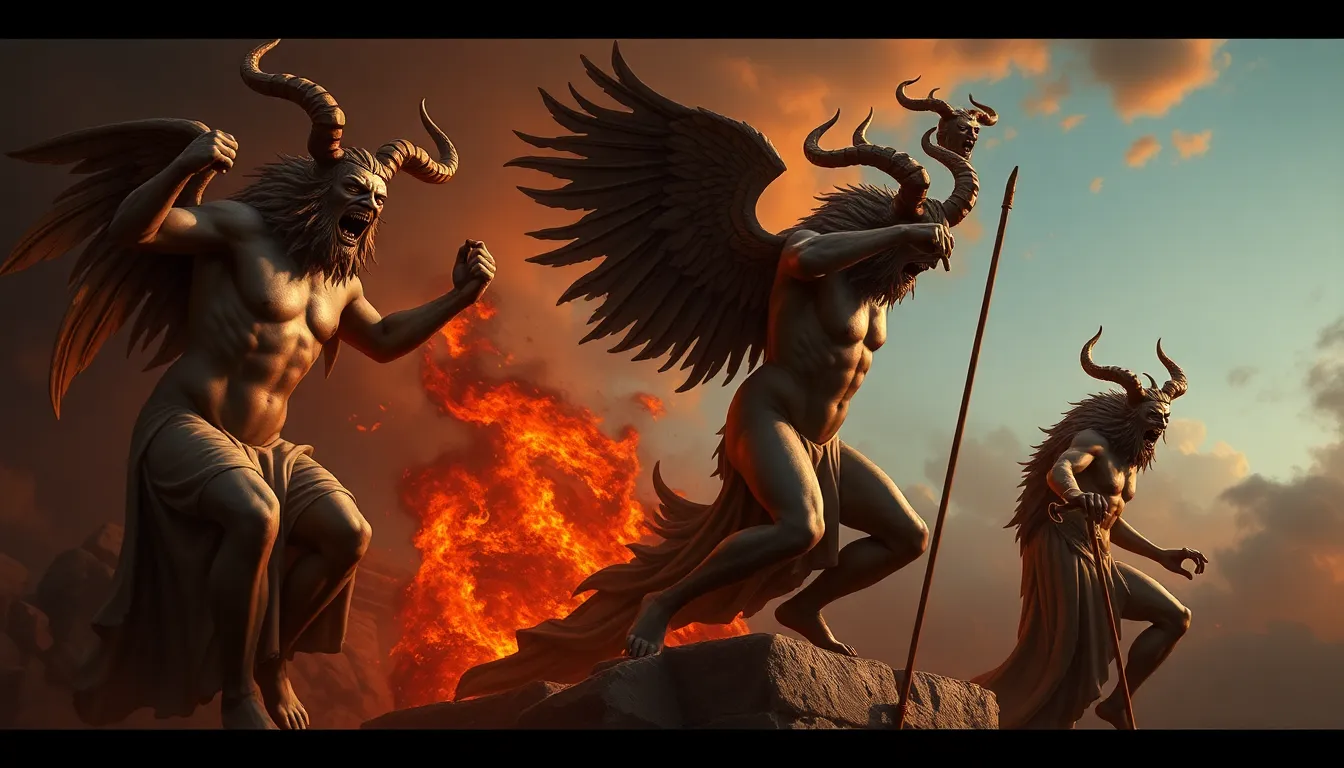The Furies: Mythical Representations of Human Emotion
I. Introduction
The Furies, known as the Erinyes in Greek mythology, are divine spirits of vengeance responsible for pursuing and punishing wrongdoers. They are often depicted as fearsome women with snakes for hair, their eyes filled with blood, representing the relentless nature of their pursuit of justice. The significance of the Furies in ancient Greek culture extends beyond mere myth; they symbolize the complex interplay of human emotions, particularly those associated with anger and retribution.
This article aims to explore the Furies as symbols of human emotion, delving into their historical context, their representation of anger and justice, and their emotional complexity, ultimately discussing their relevance in modern psychology.
II. Historical Context of the Furies
The origins of the Furies can be traced back to early Greek mythology, where they are often associated with the primordial deities of chaos and vengeance. Initially, their role was to execute divine retribution, particularly against familial betrayal, a theme that resonates strongly in Greek tragedy.
Over time, the Furies evolved in literature and art, becoming more defined in their characteristics and functions. They appear prominently in various works, including:
- Aeschylus’ “Oresteia,” where they play a crucial role in the cycle of vengeance and justice.
- Virgil’s “Aeneid,” where they haunt the protagonist, representing guilt and retribution.
- Numerous pottery and sculpture representations, showcasing their fearsome appearance and role in mythology.
Key myths featuring the Furies often involve themes of familial conflict, betrayal, and the consequences of moral transgressions.
III. The Furies as Personifications of Anger and Revenge
The Furies are quintessential representations of anger and revenge within Greek mythology. Their relentless pursuit of those who commit injustices highlights a critical aspect of human emotion: the need for retribution.
In various myths, they are depicted enacting vengeance for sins committed, such as:
- The punishment of Orestes for avenging his father’s murder by killing his mother, Clytemnestra.
- The torment of those who commit acts of betrayal against family, showcasing the societal norms surrounding loyalty and justice.
The psychological implications of their representation of anger are profound. The Furies illustrate how unchecked emotion can lead to a cycle of violence and retribution, a theme that resonates deeply with the human experience.
IV. The Furies and the Concept of Justice
The relationship between the Furies and moral order is complex. They serve as enforcers of justice, punishing those who disrupt the natural order of familial and societal relationships. However, their methods are often brutal and unforgiving.
The Furies play a crucial role in the punishment of wrongdoers, embodying the belief that justice must be served, even at a great cost. Their actions can be contrasted with modern interpretations of justice, which often emphasize rehabilitation and forgiveness over vengeance.
This dichotomy invites reflection on our own notions of justice, prompting questions such as:
- Is retribution a necessary element of justice?
- How do we reconcile the desire for vengeance with the need for moral order?
V. Emotional Complexity: Beyond Anger
While anger is a dominant theme associated with the Furies, they also embody a broader spectrum of human emotions, including grief and betrayal. Their dual nature as both protectors of the moral order and punishers of wrongdoers illustrates the complexity of human emotional experiences.
The Furies highlight the duality of emotion; they are not merely vengeful spirits but also guardians of justice. This complexity can be observed in the following ways:
- They protect the sanctity of familial bonds by punishing those who betray them.
- They evoke sympathy, as their actions often stem from a deep-rooted sense of justice.
This duality speaks to the multifaceted nature of human emotions, suggesting that feelings of anger can coexist with feelings of grief and a desire for justice.
VI. Symbolism in Art and Literature
The Furies have been depicted in various forms of art and literature throughout history. In ancient art, they are often portrayed as grotesque figures, embodying the horror of vengeance:
- In pottery, they are shown in dynamic poses, often with weapons or chains.
- Sculptures frequently highlight their fearsome attributes, emphasizing their role as avengers.
In literature, particularly in Aeschylus’ “Oresteia,” the Furies are central to the narrative, representing the conflict between old and new forms of justice. Their transformation from vengeful spirits to protectors of societal order underscores their significant role in the evolution of Greek thought regarding justice and morality.
These representations have influenced contemporary views on emotions, illustrating how ancient narratives continue to shape our understanding of complex emotional experiences.
VII. The Furies in Modern Psychology
In modern psychology, the Furies can be compared to contemporary concepts of emotion, particularly in the realm of anger management and emotional expression. They represent the raw, unfiltered nature of human emotion, prompting discussions on how we handle anger and its consequences.
The impact of the Furies on contemporary discussions includes:
- The acknowledgment that anger, while a natural emotion, often requires management to prevent destructive outcomes.
- Insights into the importance of addressing underlying grievances to prevent the escalation of conflict.
Lessons from mythology remind us that understanding and processing emotions is crucial for personal growth and societal harmony.
VIII. Conclusion
The Furies are significant as symbols of emotion, particularly as embodiments of anger and the quest for justice. Their enduring legacy in culture and psychology reflects the timeless nature of human emotional experiences.
As we explore the complexities of the Furies, we gain insight into our emotional lives, recognizing the power and necessity of all emotions, including anger, grief, and the pursuit of justice. Ultimately, the relevance of myth in understanding human emotional experiences remains a vital aspect of our shared cultural heritage.




